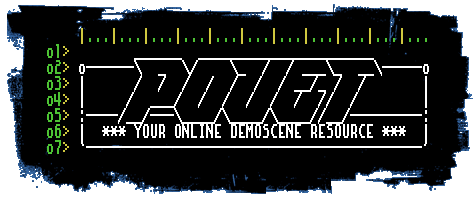Easy Sound Editing Question
category: residue [glöplog]
Gargaj+Gloom: which was exactly my point!
On a piano or a keyboard, you can make a note be played longer by holding the key pressed for a longer time. How is this done in a tracker?
rtfm.
adok: you can't. Buy a keyboard you cheapskate!
oh, and by the way, how do you feel about the Chapmans 'defacing' Hitler's artwork Adok? Does it make you sad?
gloom invented a word!
http://www.google.com/search?q=NeoConzimizer
http://www.google.com/search?q=NeoConzimizer
Now make a version of The Pornolizer that makes NeoCon-versions of websites. :)
Easy beef question..
How do I make a cow out of a hamburger?
How do I make a cow out of a hamburger?
You take a sample of the meat's DNA, and PUF! You clone it! Just like Jurassic Park.
"We were making experiments to mass produce beef... By accident, we created zombified cattle... ... DO YOU HAVE ANY IDEA HOW MUCH MEAT AMERICANS EAT DAY BY DAY? ... *hurrrrrgh*"
Insert a 0 sample after each sample. Because they’re 0 they won’t be played but they will make the sound longer.
†
All that commotion when all Adok wants is a looping sample.
<image of the game Looping Louie because it's so appropriate rn>

<image of the game Looping Louie because it's so appropriate rn>

This clearly depends on the actual value of the particular sample. There is an easy trick for certain samples which is based on the IEEE 754 floating point standard. Let's say the sample has a value of 0.5. in order to prolong this sample, you can set it to 0.4, which makes it 0.4000000059604644775390625, which is more than twice as long.
Pseudocode:
if (sample == 0.5f)
{
sample = 0.4f; // make sample longer
}
Pseudocode:
if (sample == 0.5f)
{
sample = 0.4f; // make sample longer
}
JCO's pseudo code is to the point! Another approach would be to declare your sample as double since doubles are twice as long as floats!
good point, paralax.
code:
double convertSample(float inSample) { return (double)inSample; }
code:
double convertSample(float inSample) { return (double)inSample; }
you could also apply some mastering while at it.
double convertSampleAndApplyMastering(float inSample) { return (double)(inSample * 1337.f); }
double convertSampleAndApplyMastering(float inSample) { return (double)(inSample * 1337.f); }
// make the sound a lot darker:
double convertSampleAndApplyMastering(float inSample) { return (double)(inSample * 666.f); }
double convertSampleAndApplyMastering(float inSample) { return (double)(inSample * 666.f); }
// make the sound a lot rounder:
double convertSampleAndApplyMastering(float inSample) { return sin((double)(inSample); }
double convertSampleAndApplyMastering(float inSample) { return sin((double)(inSample); }
You can also apply a compressor to your sound this way. I like to use zlib for that purpose.
If you use RLE, your sound will run within a faster length.
nice necrobump, it was very necessary, thank you!
paralax: zlib as distortion fx! ossom, please include into next spacepigs release! \o/
You should use 4 or better 12 lanes in professional mode (yotrackr.exe -pro) with volume changings at the right spots to simulate the stretch. Tip: With the well known snd2pixl.exe it will look like a 2008 powerpoint vertical-bar chart with color gradiants. ;)
another pro sound designer trick to change the duration of arbitrary audio material: put your soundsource on a magnesium-layered carrier, accelerate this carrier to relativistic speed, ???, something involving 6 microphones. make sure to compensate for red-shift and incorporate all kinds of doppler effects.
